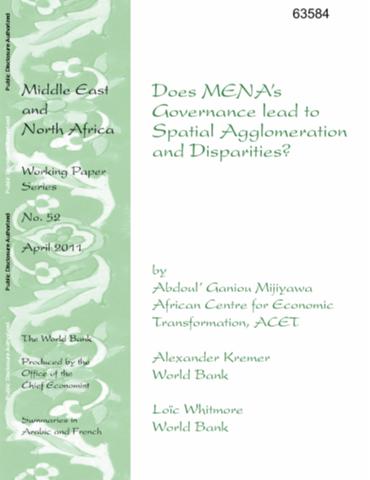Resource information
In this paper the author analyze the link between spatial agglomeration, spatial disparities and political governance with an emphasis on the Middle East and North Africa (MENA) region. The agglomeration index and the urban-rural consumption ratio are used respectively as a measurement of spatial agglomeration and spatial disparities. The author distinguishes two aspects of political governance: political rights and political stability. Statistically, we find that agglomeration rate is higher in MENA, whereas the indexes of political rights and political stability are lower in MENA compared to the rest of the world and other lower middle income countries. When running the regressions, the data better fit the agglomeration model than the urban-rural consumption ratio model. Using cross-sectional data for 182 countries around the world, the author find that the political rights index is negatively and significantly linked to the agglomeration rate. Our results suggest that an improvement in MENA countries' level of political rights to the average of the rest of the world would be associated with agglomeration rate 4 percentage points lower than its average level in the region. The data also reveal an inverted-U relationship between the agglomeration rate and Gross Domestic Product (GDP) per capita, and a negative relationship between trade openness and the agglomeration rate.


